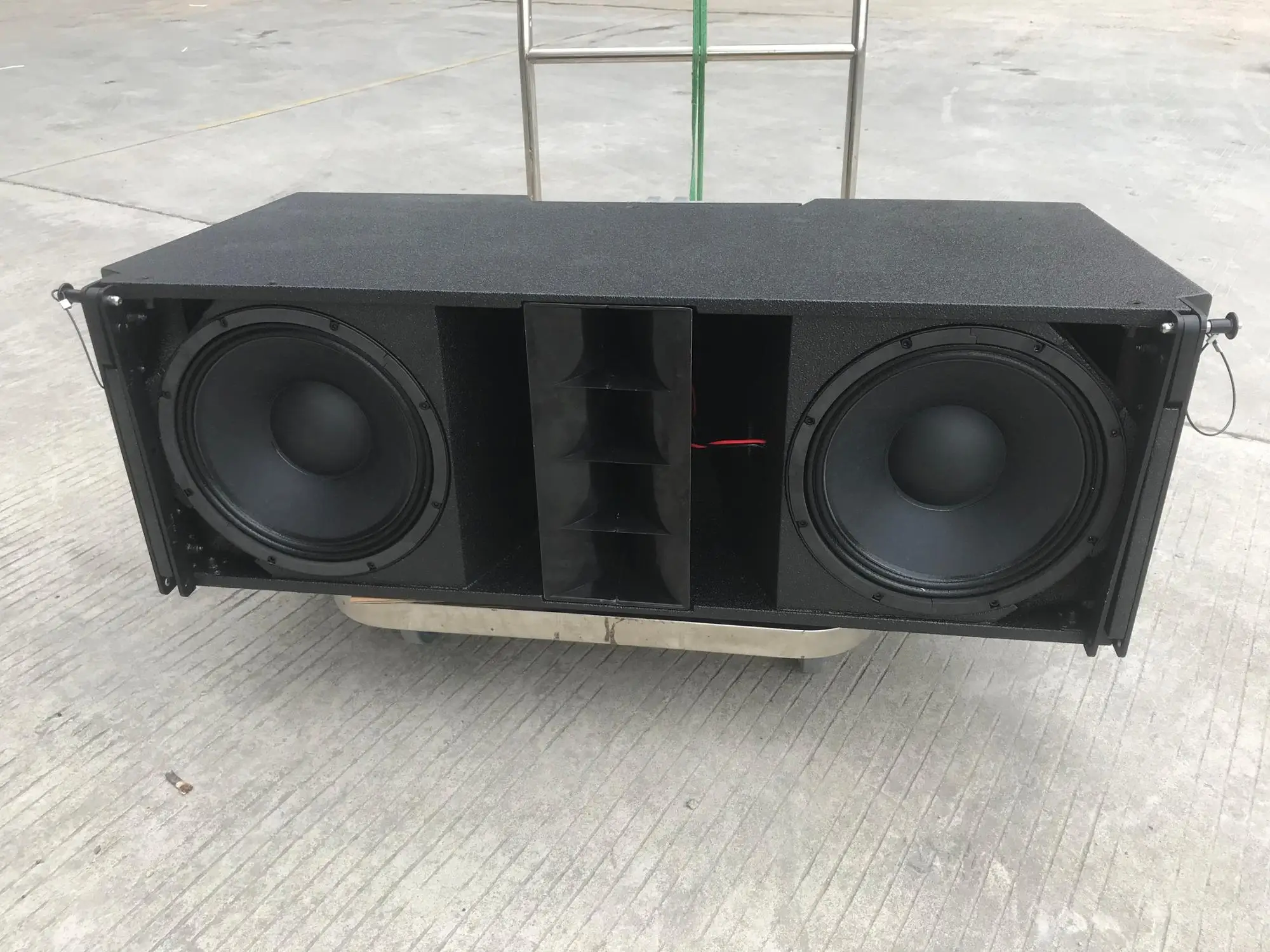Table Of Content

Moreover, they consider soundstage presentation and clarity of vocals. The results of this testing reveal how well the speaker reproduces low, mid-range, and high-frequency sounds. A flat response curve across all frequencies is ideal, as it shows accurate sound reproduction without emphasizing any particular range. Impedance, also known as electrical resistance, is an important part of hi-fi speaker design. It refers to the range of frequencies that the speaker can reproduce faithfully. Plus, bandpass and passive radiator systems offer unique audio characteristics.
CAR AUDIO
This design overview neglects many designconsiderations a professional designer may consider such as time alignment,distortion and polar response but provides a starting point. Powered horn loudspeakers leverage this effect much in the same way, to squeeze impressive sonic results from very low levels of amplification. This makes them often an intriguing option for pairing with acoustically superior but comparably underpowered tube-based amp systems. Unfortunately, horn loudspeakers must be very large in order to provide adequate levels of bass response, making many designs highly impractical for anyone who can’t afford a private Walmart to put them in. For small-medium size systems, a hybrid crossover solution is common.
Art Forum Guest Speaker, Ranio Ho – Department Of Art And Design - Montclaire News
Art Forum Guest Speaker, Ranio Ho – Department Of Art And Design.
Posted: Fri, 26 Apr 2024 18:57:45 GMT [source]
Reviewed by Lucidity Audio
Hi-Fi speakers work by converting electrical signals into sound waves. When an audio signal is received, it passes through the amplifier and then to the speakers. The speakers consist of drivers, such as woofers and tweeters, that vibrate to produce sound. The quality of the components and the design of the enclosure greatly impact the overall sound reproduction.
Wearable Speaker Designs Continue to Evolve - Core77.com
Wearable Speaker Designs Continue to Evolve.
Posted: Wed, 24 Apr 2024 16:07:51 GMT [source]
LX521 - Reference Loudspeaker
For a first design, a 2-way loudspeaker should be the limit as 3-wayspeakers are a little more complicated to pull off properly. However, this article covers a 3-way designsince this is what is needed to meet the design goals without any magic. There are many different types of enclosuresand methods used to extend low frequency response.
Dolby Audio vs Dolby Atmos: Know the Difference Before You Buy Your Next Soundbar or Speaker System
And once you hear it, it’ll be the only bass you want to listen to going forward. Our bass mirrors the groove, so you won’t hear it thumping and knocking the other sounds out of the way. We also provide receivers, monitors, and other audio equipment for your professional needs. We are Downtown LA's first design oriented audio showroom and social listening space for those who love music.
DIY Audio & Video
The downward slope of the tweeter’s response is approximately 12db over an octave, exactly the opposite of the slope you would get from a second order high pass filter. Applying a 12db/octave high pass filter at around 5khz, we can effectively rebalance the response of the tweeter, flattening it below 5Khz. Here we have the plots of the 1.65kHz low pass applied to the woofer (purple) and a 5kHz (approx) high pass applied to the tweeter (green).
A modern state of the art voice coil is designed to withstand extremely high temperatures, often operating at up to 3000C or more when driven at full power. 0.4% may sound insignificant, but remember this is per °C – at only 2300C the voice coil DC resistance has almost doubled which causes the voice coil impedance to increase accordingly. Some simple maths and you can quickly see that the increase in temperature can make your 8 ohm speaker start behaving more like a 16 ohm speaker. Add to this the confusion of RMS Power, Continuous Power, Program Power, and Peak Power and it’s not suprising some of you are getting confused. This article aims to explain some of terms used, and dispel a few myths.
Building a Do-It-Yourself Loudspeaker Design

Your 8 ohm driver will no longer be an 8 ohm driver, and the nominal impedance could rise to as high as 13 or 14 ohms. At full power, many drivers are no longer operating at their stated impedance, and they generating a lot of heat. One great benefit of full-range ribbons and full-range electrostatics is the absence of a crossover; the diaphragm is driven by the entire audio signal. This prevents any discontinuities in the sound as different frequencies are reproduced by different drivers.
With active crossovers its much easier to balance different frequency bands. Its common with passive crossovers to require attenuation of high frequencies, through the use of attenuation resistors. Series impedances work opposite to parallel, going back to the comparison with traffic, if your busy road has traffic lights in it, every extra set of traffic lights adds more resistance to traffic flow. To calculate the total impedance, simply add together the individual impedances, as shown in the table below.
That last option might please die-hard audiophiles, but the mainstream market wants smaller, not larger speakers. Jones again, "We constantly juggle, and different designers make different compromises." Although CAD hascome a long way, designing a loudspeaker crossover benefits from somebackground in electronics. SoundEasy has2-way to 5-way crossover templates covering 1st order to 4thorder crossover topologies. Additionally, there are templates for a wide array of typical filtersand compensation circuits. The CADframework allows implementation of any circuit or filter topology imaginable solong as it uses inductors, resistors, capacitors, operational amplifiers,potentiometers or logic gates.

In other words, the woofer delivers lots of very low bass with very little input power. The price of this performance is the need for the outboard supply that has to be plugged into an AC outlet, along with the sheer weight of the woofer. The EM’s 16″ woofer weighs 63 pounds, 48 of which is the electromagnetic coil. Finally, a dynamic driver can “bottom out,” heard as a popping or cracking sound from the woofer. The popping sound is caused by the voice-coil former (the bobbin around which the voice coil is wound) hitting the back of the magnet structure. This can change with frequency, affecting power handling and frequency response.
Finally, album covers were glued to the cabinet and the covers wereprotected with a thin layer of Lexan. This project was designed inSolidWorks but could easily be done in Google SketchUp. The 3D CAD programs allow for easycalculation of internal volume and are really handy for test fitting driversand ports before building the cabinet.
On a more technical level, the voice coil is a length of wire wound around a thin cylinder called the voice-coil former. Electrical current from the amplifier flows through the voice coil, which is mounted in a permanent magnetic field whose magnetic lines of flux cross the gap between two permanent magnets. According to the “right-hand rule” of physics, the circular flow of current through the voice-coil windings generates magnetic forces that are directed along the voice coil’s axis. The interaction between the fluctuating field of the voice coil and the fixed magnetic field in the gap produces axial forces that move the voice coil back and forth, carrying the diaphragm with it. The faster the audio signal alternates, the faster the diaphragm moves, and the higher the frequency of sound produced. Dynamic drivers are also called moving-coil drivers, for obvious reasons.

No comments:
Post a Comment